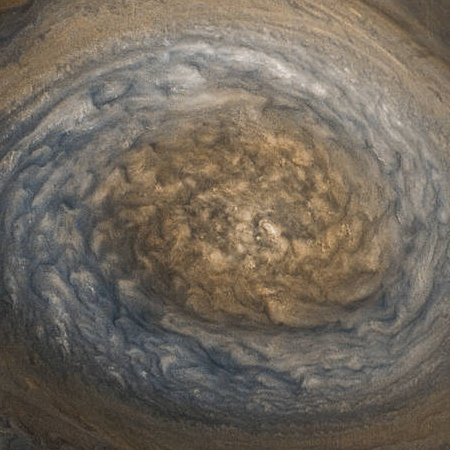One of Jupiter’s mid-sized storms

Cool image time! The Juno image on the right, cropped to show here, focuses in on one of Jupiter’s mid-sized storms near its high northern latitudes and just on the edge of the chaotic polar region.
This storm is a long-lived anticyclonic oval named North North Temperate Little Red Spot 1 (NN-LRS-1); it has been tracked at least since 1993, and may be older still. An anticyclone is a weather phenomenon where winds around the storm flow in the direction opposite to that of the flow around a region of low pressure. It is the third largest anticyclonic oval on the planet, typically around 3,700 miles (6,000 kilometers) long. The color varies between red and off-white (as it is now), but this JunoCam image shows that it still has a pale reddish core within the radius of maximum wind speeds.
Be sure to take a look at the full image, which provides a bit of context.

Cool image time! The Juno image on the right, cropped to show here, focuses in on one of Jupiter’s mid-sized storms near its high northern latitudes and just on the edge of the chaotic polar region.
This storm is a long-lived anticyclonic oval named North North Temperate Little Red Spot 1 (NN-LRS-1); it has been tracked at least since 1993, and may be older still. An anticyclone is a weather phenomenon where winds around the storm flow in the direction opposite to that of the flow around a region of low pressure. It is the third largest anticyclonic oval on the planet, typically around 3,700 miles (6,000 kilometers) long. The color varies between red and off-white (as it is now), but this JunoCam image shows that it still has a pale reddish core within the radius of maximum wind speeds.
Be sure to take a look at the full image, which provides a bit of context.

